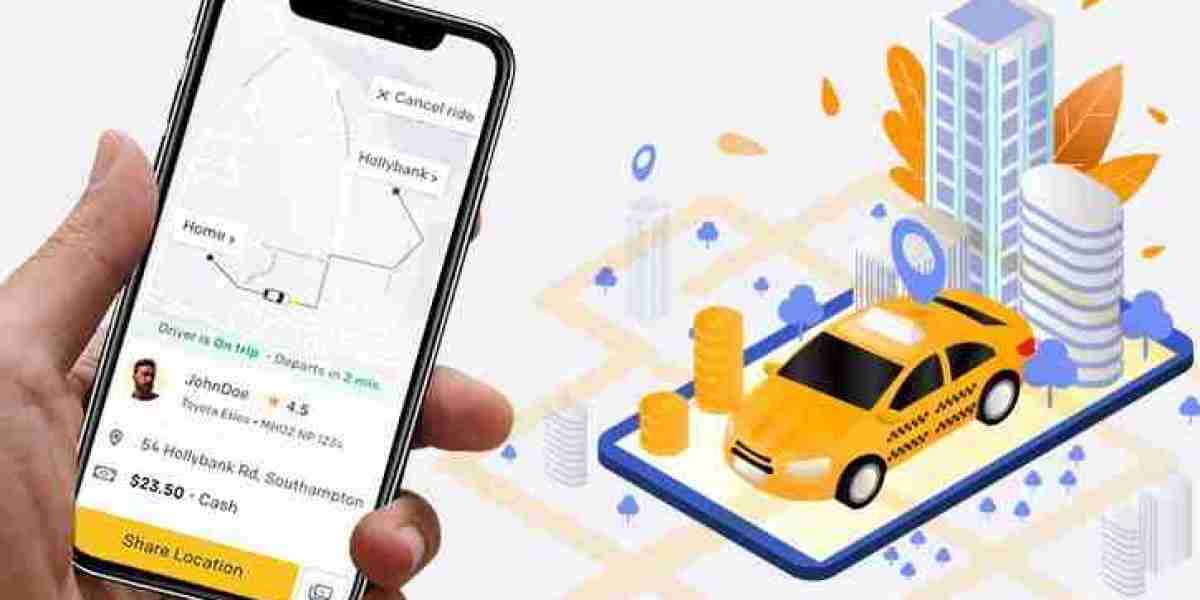The world of transportation is undergoing a seismic shift with the rise of autonomous vehicles. At the forefront of this revolution is Tesla’s Robotaxi, which promises to redefine urban mobility through self-driving technology. As these AI-powered vehicles edge closer to reality, taxi booking app development must also evolve to keep pace. Integrating Tesla Robotaxis into next-gen mobility platforms represents the next big leap in the on-demand transportation ecosystem.
What Is a Tesla Robotaxi?
Tesla’s Robotaxi is a self-driving vehicle that operates without a human driver, based on Tesla’s Full Self-Driving (FSD) technology. These cars are designed to provide safe, efficient, and fully autonomous rides—making personal vehicle ownership optional in the near future. Tesla aims to deploy a vast fleet of these Robotaxis, where users can hail a ride through a mobile app just like they do with Uber or Lyft—only without a driver behind the wheel.
Why Taxi Booking App Development Must Adapt
As Tesla prepares for mass rollout of Robotaxis, traditional taxi booking apps face both a challenge and an opportunity. Most current apps are designed around driver-rider interaction. With the human driver removed from the equation, app features, infrastructure, and security protocols must be reimagined.
Key Shifts in App Development:
Advanced Routing Algorithms: Autonomous vehicles need real-time routing integrated with AI and predictive modeling.
Vehicle Monitoring: Real-time vehicle health, battery status, and autonomous performance tracking must be embedded.
No-Driver Interfaces: Features like automated door unlock, AI-based assistance, and voice navigation control.
Enhanced Safety Features: Live video streaming, panic buttons, and remote control for emergencies.
These changes make it essential for companies to invest in innovative taxi booking app development, tailored to a driverless future.
Robotaxi Tesla Integration: What It Involves
Integrating Tesla’s Robotaxi into a mobile app involves not just API access (when available), but also building a scalable backend and user-friendly frontend that can handle autonomous operations.
Major Components Include:
Tesla API Integration: Secure access to vehicle control, status, and location.
Autonomous Fleet Management: Backend system to dispatch, monitor, and manage a fleet of Robotaxis.
Smart Scheduling & Predictive Analytics: Using AI to optimize ride allocation based on location, usage trends, and battery levels.
User Experience Overhaul: Since there’s no driver, the app must guide the user from pickup to drop-off, ensuring a smooth autonomous ride.
Benefits of Tesla Robotaxi Integration
Cost Reduction: Eliminates the need to pay drivers, significantly reducing operating costs.
24/7 Availability: Robotaxis never tire, offering round-the-clock ride availability.
Eco-Friendly: Tesla’s electric vehicles help reduce carbon emissions.
Scalability: With AI and data at the core, Robotaxi fleets can scale quickly without massive human resource requirements.
Real-World Comparison: Waymo vs. Tesla Robotaxi
Companies like Waymo have already launched limited autonomous ride-hailing services. Waymo app development has shown that integrating AI, mapping, and vehicle data into a seamless user experience is possible. However, Tesla’s edge lies in its vertically integrated ecosystem—software, hardware, and vehicle all under one roof—enabling faster and smoother app-vehicle communication.
Just as Waymo app development laid the foundation for autonomous mobility, Tesla’s Robotaxi ecosystem will demand an even more integrated and performance-focused approach in app development.
Challenges in Robotaxi App Development
Regulatory Compliance: Laws around autonomous vehicle operation vary by region.
Public Trust & Safety: Gaining user trust in a driverless experience takes time.
Technical Limitations: FSD technology is still evolving and may not be fully reliable in all geographies.
Addressing these challenges will require strong collaboration between software developers, vehicle manufacturers, and regulatory authorities.
The Role of On-Demand Taxi Booking App Development
To prepare for the future of autonomous ride-hailing, businesses must embrace on-demand taxi booking app development tailored to Tesla’s Robotaxi capabilities. This involves:
Rebuilding legacy systems to support autonomous logic.
Incorporating predictive analytics and AI.
Investing in cloud infrastructure that scales with user demand.
Ensuring top-notch security and data privacy.
By doing so, companies can position themselves at the forefront of smart mobility solutions.
Final Thoughts
The integration of Robotaxi Tesla with mobile applications is not just a tech upgrade—it's a fundamental shift in how we experience urban mobility. As we move toward a future powered by autonomous electric vehicles, businesses involved in taxi booking app development must innovate faster, think smarter, and build more intelligently. Whether you're developing your first taxi app or upgrading an existing one, preparing for the Robotaxi era is no longer optional—it’s essential.




